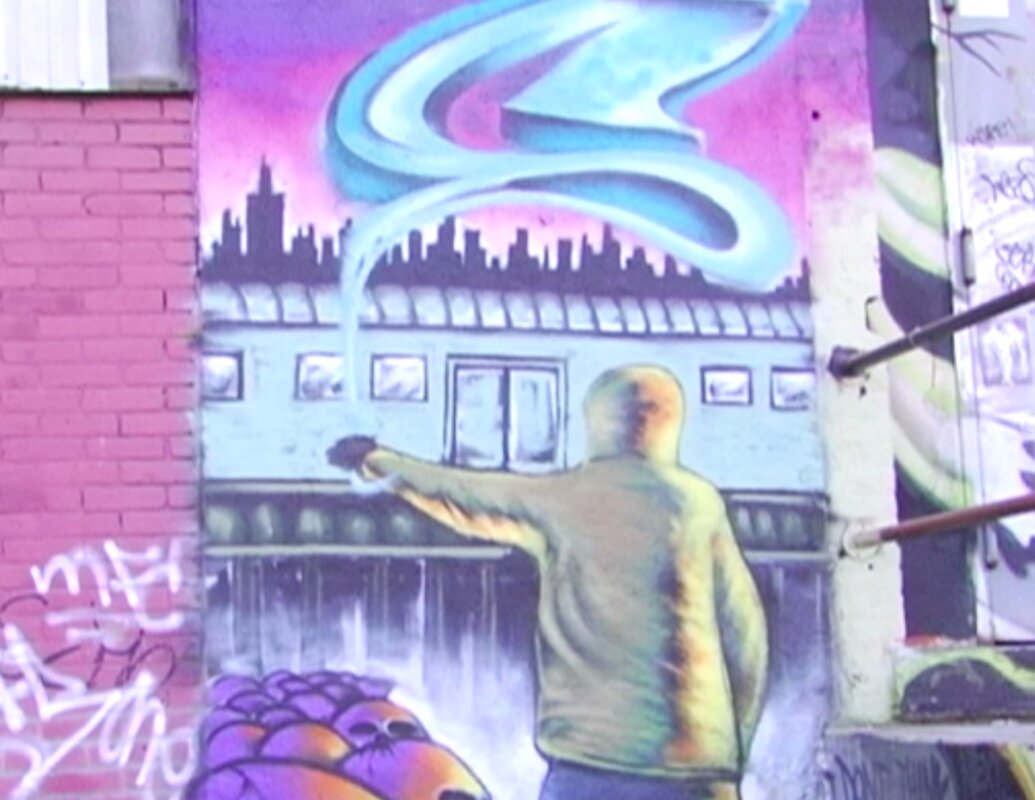How efforts to combine arts with STEM education could improve tech diversity
Loading...
| Cambridge
The origins of hip-hop culture in New York City in the 1970s and '80s are often popularly linked with economic malaise – high crime rates, graffiti-lined subways, the seediness of Times Square – perhaps best encapsulated in the New York Daily News’ referring to the city’s chances for a federal bailout from the President: “Ford to City: Drop Dead.”
But for black and Latino youth, the art forms that eventually became hip-hop – graffiti, breakdancing, DJing, and rapping – may have actually been an opportunity to combine art with concepts in science, math, and technology – in up from a sketchbook to a wall, or creating a DJ mixer capable of seamlessly transitioning from record to record – in a realm far outside the classroom.
Amid ongoing debates about the lack of diversity in Silicon Valley and on minority students studying computer science in high school and college, links between art and traditional STEM disciplines – such as the technological innovations of hip hop – aren’t always discussed, says Nettrice Gaskins, an artist and teacher at Boston Arts Academy, at an event on Tuesday at Harvard Law School.
“There’s a disconnect,” she says. “We find that this happens over and over again in groups that aren’t part of a lot of discourse around science, technology, engineering, and math but they’re doing these things anyway as part of their everyday life or their creative expression.”
She first began examining what she terms “techno-vernacular creativity,” – or uses of technology by groups outside the mainstream – while researching as part of her dissertation on digital media at Georgia State University.
Now, she’s using her research to help a new generation of students find a passion for math and science as director of the STEAM Lab – which adds “art” to science, technology, engineering, and math topics – at the public Boston Arts Academy, which serves about 40 percent black and 40 percent Latino students from neighborhoods across the city.
One theater student at the city’s sole arts-focused high school was struggling academically, she recalls. But he had long nurtured a passion for video games, which he was able to turn into an interest in video projection mapping – or using motion sensitive controllers and a computer to project multiple video images on a wall, which he used in a theater production performed last week.
Another dance student was working on an extra-credit project for a science class and approached Dr. Gaskins about using a , a circuit board that can be used to play music, to create an interactive dance floor using conductive paint that changed as she danced.
“It’s not that these young people aren’t interested in these activities, it’s that they don’t see themselves, or some people like them, doing it,” she says.
For students, being adaptable to change and keeping what Gaskins calls “an entrepreneurial spirit” is key, especially for students who want to go on to college but lack the resources to do so.
She cites the example of early hip-hop pioneers such as Grandmaster Flash, often credited with – now a standard feature on DJ mixers – by modifying an existing mixer with parts scrounged from a junkyard while he was still in his teens.
“See, before this DJ thing, I was hopelessly taking things apart to try to figure out how they worked. I’d go mess around with burned-out cars, with my mom’s stereo — I was public enemy #1 in my house for that,” Grandmaster Flash in 2002. “So my mom noticed that I was interested in this and decided to send me to school so I’d know what I was doing. So suddenly I’m learning Ohm’s Law, what a capacitor was, what a resistor is, calculating numerical factors. And it all started coming into being.”
While student debt levels are continuing to rise, which could potentially put college out of reach for many students interested in pursuing careers that combine the arts and technology, Gaskins points to some areas of progress on the federal level. Last month, lawmakers focused on integrating the arts into STEM into the landmark re-authorization of the Elementary and Secondary Education Act recently passed by Congress.
She calls the adoption of STEAM in schools around the country an ongoing process.
“I think that a lot of kids have been sort of indoctrinated in this idea that ‘If you fail, you’re a failure’ and I think that has to change,” she says. "Seeing adults that are failing and not giving up and going in and fixing [a project] helps young people understand that it’s part of a process."




